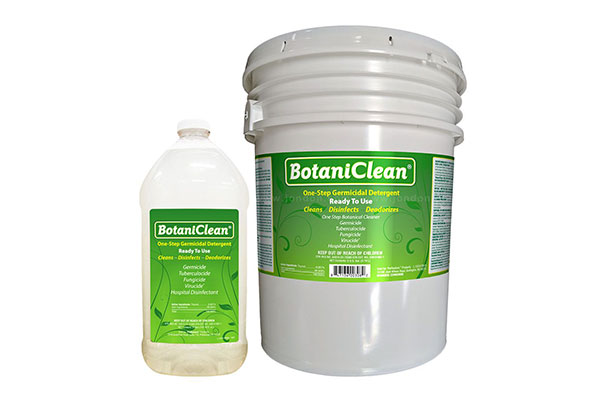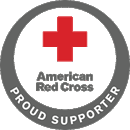The use of disinfectants and anti-microbial chemicals in water damage situations is necessary sometimes in a restorer’s efforts to return an affected area to its healthy, pre-loss condition. Anti-microbial is the general term under which one type is a disinfectant. The other two types are sterilizers and sanitizers.
Sanitizers
Sanitizers are the weakest of the public-health anti-microbials. They are best used on food-contact surfaces such as countertops, children’s highchair trays, and cutting boards. Some common sanitizers are hand soap, dishwashing liquid, and laundry detergent. Another is chlorine bleach, but it only works well as a sanitizer when it is used on non-porous surfaces like certain kinds of countertops or ceramic tiles. Sanitizers are considered effective on 99.9% of microorganisms.
The Coronavirus pandemic has made hand sanitizers a very popular product at this time. It has come to the attention of the Food and Drug Administration (FDA) that some brands of hand sanitizer being currently sold may contain methanol, a toxic alcohol that can be absorbed through the skin.
Sterilizers
A sterilizer kills or deactivates all forms of microorganisms such as fungi, bacteria, viruses, and mold spores. Use of a sterilizing agent is fraught with health risks and should not be used unless extreme conditions exist and then only be qualified experts. Sterilizers are not used very often in most water damage situations. Certain types of alcohols, like ethanol and methyl, are two examples of chemicals that can be used as a sterilizing agent. Sterilizers kill 100% of microorganisms.
Disinfectants
Disinfectants are chemical agents designed to render harmful microorganisms inactive on surfaces or to destroy them. These chemicals do not necessarily kill everything they come into contact with. They may destroy mold itself but they are less effective in destroying mold spores. Disinfectants are considered effective on 99.997% of microorganisms.
Are Disinfectants Safe to Use?
Understanding what materials these products can be used to treat and what health risks they may present is important. The best source of this information can be found on the product label.
Each active ingredient in an antimicrobial used in restoration drying has strengths and weaknesses. Use needs to depend on where it is to be applied, what microorganism is being targeted, and what environmental, conditions exist at the time..
Alcohol – its official name is Isopropanol, or rubbing alcohol, and it is an effective anti-microbial. The problem with using an alcohol-based product is that alcohol is highly volatile and flammable. It can’t be safely used around any open flame. It evaporates very quickly allowing for very little effective dwell time.
Aldehydes – its common form is formaldehyde. Since aldehydes are non-ionic (they carry no electronic charge) they are safe to use on stain-resistant carpets without removing the carpet’s stain resistant qualities. Aldehydes weakness is that it can be deactivated when it comes into contact with organic material. Many of them create very little foaming action, making them an ideal addition to cleaning carpet detergents.
Hypochlorites – they are highly effective against a broad range of microorganisms. They are usually inexpensive and readily available to the public. However, hypochlorites are a strong bleaching agent and they corrode metals. They are also easily deactivated by organic matter and have little ability to suspend dirt, which makes them not so useful as cleaners. Common household bleach is a type of hypochlorite.
Ozone – or O3 , is a gas that is great for eliminating volatile odors and microorganisms. It can be deadly in high concentrations and may react with other chemicals it may come into contact with. It will destroy natural rubber products. Ozone is sometimes used to combat mold but it is mainly used to eliminate odors after a fire. Ozone is produced by a machine apply known as an ozone generator. O3 is very unstable and will revert to O2 quickly.
Hydrogen Peroxide – H2O2 is effective but only for a short period of time. It is extremely sensitive to organic materials. It can bleach fabrics and is known to cause corrosion.
Quaternary Compounds – “quats” are the active ingredients found in many consumer cleaning products. They are relatively safe to use when diluted properly and are effective against a wide variety of organisms. Their only down side is that they have a high alkalinity. A general cleaner like Pine-Sol and cleaning wipes usually have quaternary compounds as their active ingredients.
Phenolic Compounds – these are commonly used to clean up sewage. They are widely effective and nearly impervious to organic materials. That said, it is always important to remove as much organic material before applying a phenolic compound. Many of the Lysol products contain phenolic compounds although these are not necessarily recommended to clean up a sewage backup.
The risks involved with using anti-microbial disinfectants must be weighed against the risks presented by any microorganisms present. The human factor must also be considered. Are there any chemically sensitive individuals present or people with any kind of suppressed immune system? The best situation concerning chemicals is that the less used, the better for everyone involved. When an anti-microbial disinfectant is chosen, it should always be EPA-registered for that particular usage.
Water Mold Fire Restoration is an industry leader when it comes to water damage restoration and mold remediation. Our technicians receive hours of hands-on training and are nationally certified by the IICRC. They know the proper procedures to follow and the correct disinfectants to use. You can contact us at 800-905-0277 24/7 or reach us by email at help@watermoldfire.net.








